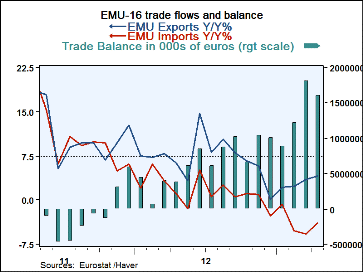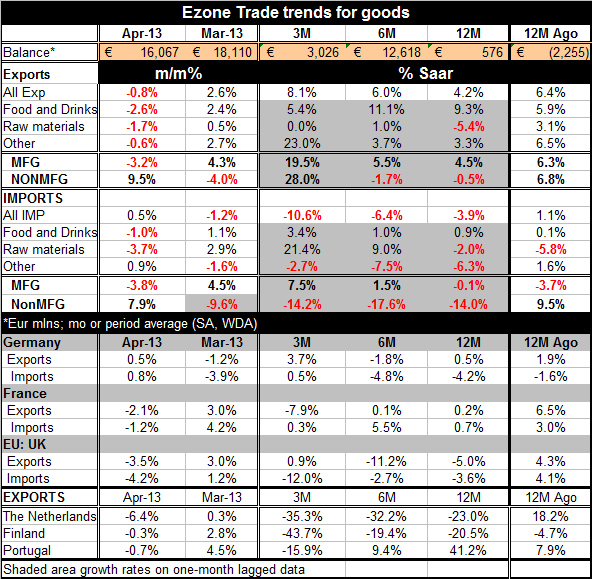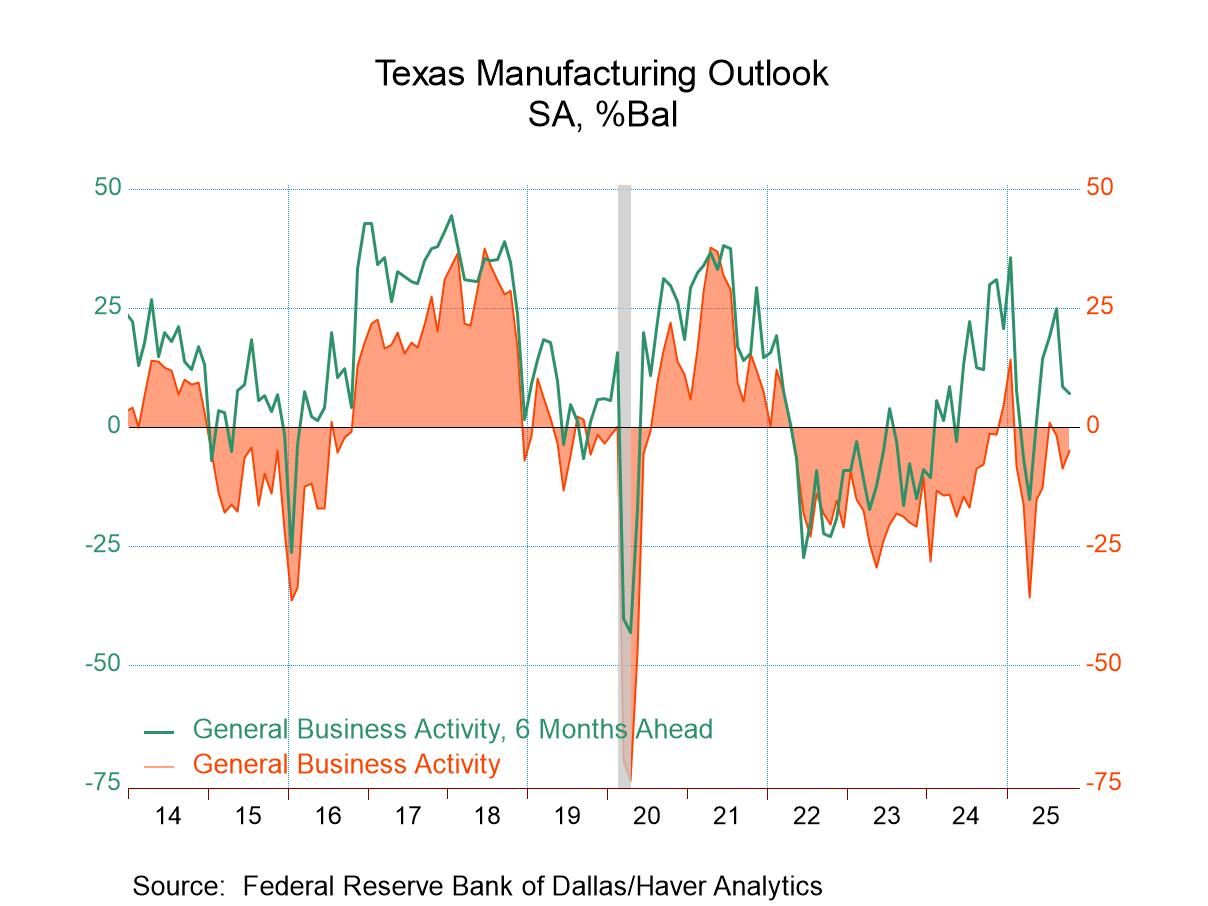 Global| Jun 17 2013
Global| Jun 17 2013e-Zone Trade Surplus Shrinks but Stays Large
Summary
In April exports in the European Monetary Union (EMU) fell by 0.8% after rising by 2.6% in March. Also in April imports rose by 0.5% after falling by 1.2% in March. The trends are somewhat contrary to the monthly developments. Exports [...]
 In April exports in the European Monetary Union (EMU) fell by 0.8% after rising by 2.6% in March. Also in April imports rose by 0.5% after falling by 1.2% in March. The trends are somewhat contrary to the monthly developments. Exports in fact are accelerating in the Eurozone they are up at an 8.1% annual rate over three months, a 6% pace over six months and to a 4.2% pace over 12 months, clearly an accelerating pattern. On the other hand imports are falling at a 10.6% annual rate over three months, at a 6.4% pace over six months, and then at nearly a 4% pace over 12 months. Import weakness is an accelerating in the Eurozone. That effects trends to keep the current account surplus large. The surplus is over 16 billion euros in April, slightly smaller than the 18 billion figure for March, but is up sharply from 2.2 billion euros one year ago.
In April exports in the European Monetary Union (EMU) fell by 0.8% after rising by 2.6% in March. Also in April imports rose by 0.5% after falling by 1.2% in March. The trends are somewhat contrary to the monthly developments. Exports in fact are accelerating in the Eurozone they are up at an 8.1% annual rate over three months, a 6% pace over six months and to a 4.2% pace over 12 months, clearly an accelerating pattern. On the other hand imports are falling at a 10.6% annual rate over three months, at a 6.4% pace over six months, and then at nearly a 4% pace over 12 months. Import weakness is an accelerating in the Eurozone. That effects trends to keep the current account surplus large. The surplus is over 16 billion euros in April, slightly smaller than the 18 billion figure for March, but is up sharply from 2.2 billion euros one year ago.
Manufacturing goods exports are up strongly growing at a nearly 20% annual rate over three months compared to four and a half percent over 12 months. For imports manufacturing goods are also increasing, but at a slower 7.5% annual rate over three-months compared to -0.1% over 12 months.
German exports are increasing at a 3.7% annual rate over three months compared to 0.5% over 12 months, In France exports are falling at an 8% annualized rate over three months compared to rising by 0.2% over 12 months In the UK, not a common currency participant, exports are rising at a 0.9% annual rate over three months compared to falling by 5% over 12 months. Except for France the export trends these countries are improving. The Netherlands, Finland, and Portugal all show negative trends over three months and substantially negative trends as well as deteriorating trends over three months.
Despite being in a common currency area export trends are quite disparate for European Monetary Union members. On top of this the import weakness in the area underscores the weakness in domestic demand throughout the Eurozone. These are not new developments.
The Bundesbank expects some small pickup in German growth in the near-term, but is still not that optimistic for the medium-term. The Zone continues to struggle. Its problems, are underscored by import weakness: the fact is that domestic demand continues to be an issue. The revival of exports and the improving performance in Germany highlights that the improvement has been in the exports of capital goods, not across the board.

Robert Brusca
AuthorMore in Author Profile »Robert A. Brusca is Chief Economist of Fact and Opinion Economics, a consulting firm he founded in Manhattan. He has been an economist on Wall Street for over 25 years. He has visited central banking and large institutional clients in over 30 countries in his career as an economist. Mr. Brusca was a Divisional Research Chief at the Federal Reserve Bank of NY (Chief of the International Financial markets Division), a Fed Watcher at Irving Trust and Chief Economist at Nikko Securities International. He is widely quoted and appears in various media. Mr. Brusca holds an MA and Ph.D. in economics from Michigan State University and a BA in Economics from the University of Michigan. His research pursues his strong interests in non aligned policy economics as well as international economics. FAO Economics’ research targets investors to assist them in making better investment decisions in stocks, bonds and in a variety of international assets. The company does not manage money and has no conflicts in giving economic advice.






